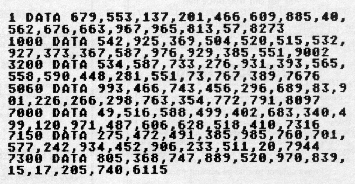Weather Forecaster
16K Cassette or Disk
by Dr. Steven B. Newman
As we're all made painfully aware each day, weather forecasting is not yet an exact science. In fact, it sometimes seems that we could all do better than the socalled experts. Weather Forecaster gives you a chance to do your own forecasting. Then, if you find yourself shoveling 6 inches of "partly cloudy," you'll have no one to blame but yourself.
The facts for forecasting.
The scientific basis behind the Weather Forecaster lies in the way in which pressure changes and local winds are related to large scale atmospheric movements. Low pressure systems, which are associated with clouds and rainfall, are usually preceded by southerly or easterly winds and falling barometric pressure. A rising barometer accompanied by northerly or westerly winds is a good indication of approaching high pressure and improving weather.
All one needs, then, to make relatively accurate shortrange weather forecasts is a knowledge of the present barometric tendency, pressure and wind direction. Weather Forecaster takes any particular combination of these factors and branches to a list of possible forecasts, each of which applies to a unique situation.
For example, a slowly falling barometer combined with southeasterly winds is usually a good indication of an approaching warm front. Warm fronts are often preceded at the surface by a large area of precipitation. Thus, the program will forecast RAIN AND WARMER in such a situation.
Or, after the passage of a cold front, the barometer may rise, with winds shifting to the northwest. Under such circumstances, the Weather Forecaster will predict FAIR AND COLDER.
Using the forecaster.
After you've loaded the program and typed RUN, the computer will prompt you for the barometric tendency, present barometric pressure and present wind direction. The forecast will then be displayed on a graphics 2 screen. I have chosen to give different forecasts in different colors-green for fair weather, blue for cold weather, orange for warm weather and red for inclement weather.
Try running the Weather Forecaster at the same time each day for about a month. Compare the accuracy of your forecasts with those produced by the National Weather Service-or any other source of weather information. I think you'll be pleasantly surprised with the results.
Don't get too cocky, though. You'll soon realize that weather forecasting can be an exhilarating, yet often humbling experience.
BASIC Listing
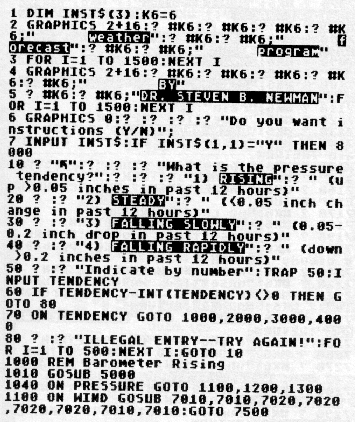
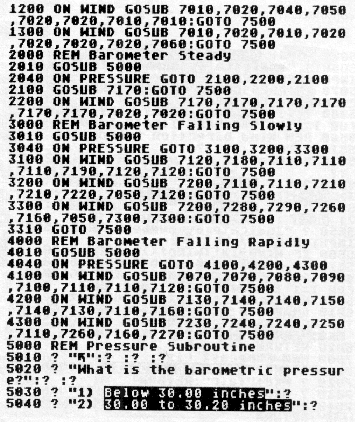
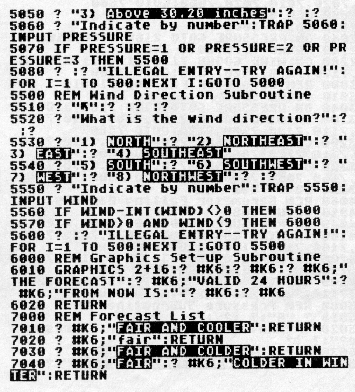
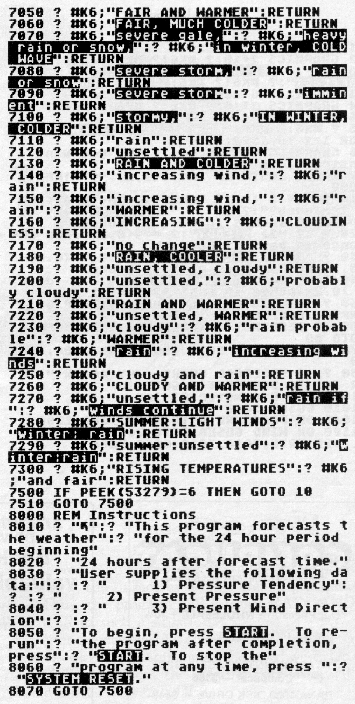
CHECKSUM DATA
